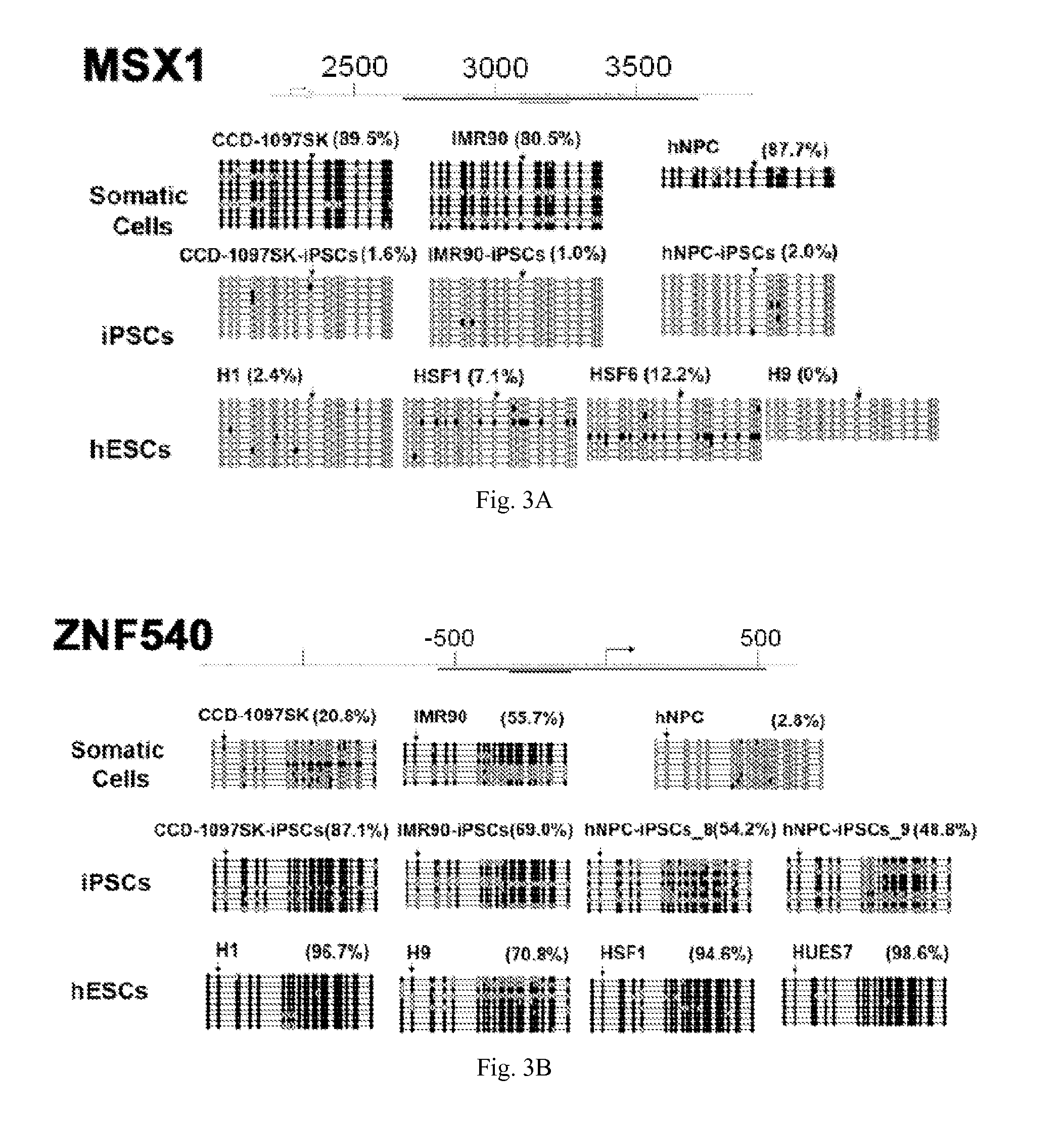Molecular Markers and Assay Methods for Characterizing Cells
a technology of molecular markers and assay methods, applied in combinational chemistry, biochemistry apparatus and processes, library screening, etc., can solve the problems of insufficient information, groups that do not examine the differences in methylation of single cpgs, and limitations in their study, so as to improve the correlation of beta-value, improve methylation, and reduce methylation in ipscs.
- Summary
- Abstract
- Description
- Claims
- Application Information
AI Technical Summary
Benefits of technology
Problems solved by technology
Method used
Image
Examples
Embodiment Construction
[0038]The present invention provides molecular markers—one or more of which may be used to characterize a cell as a somatic cell, an induced pluripotent stem cell (iPSC), an embryonic stem cell (ESC), or a particular cell type, cell line, or cell strain. According to the present invention, each molecular marker is a single CpG which may be methylated or unmethylated. Some of the CpGs may be located in CpG islands and / or located adjacent to gene promoters. In some embodiments, the cells are mammalian cells, preferably human cells. In some embodiments, the present invention provides unique sets of CpGs with different levels of DNA methylation which forms characteristic methylation signatures (i.e. profiles) in various cell types. These unique sets of CpGs may used to characterize a variety of cells.
[0039]As used herein, a “cell type” refers to the distinct morphological and / or functional form of a cell. See the World Wide Web at en.wikipedia.org / wiki / List_of_distinct_cell_types_in_the...
PUM
| Property | Measurement | Unit |
|---|---|---|
| length | aaaaa | aaaaa |
| CpG frequency | aaaaa | aaaaa |
| density | aaaaa | aaaaa |
Abstract
Description
Claims
Application Information
 Login to View More
Login to View More - R&D
- Intellectual Property
- Life Sciences
- Materials
- Tech Scout
- Unparalleled Data Quality
- Higher Quality Content
- 60% Fewer Hallucinations
Browse by: Latest US Patents, China's latest patents, Technical Efficacy Thesaurus, Application Domain, Technology Topic, Popular Technical Reports.
© 2025 PatSnap. All rights reserved.Legal|Privacy policy|Modern Slavery Act Transparency Statement|Sitemap|About US| Contact US: help@patsnap.com



